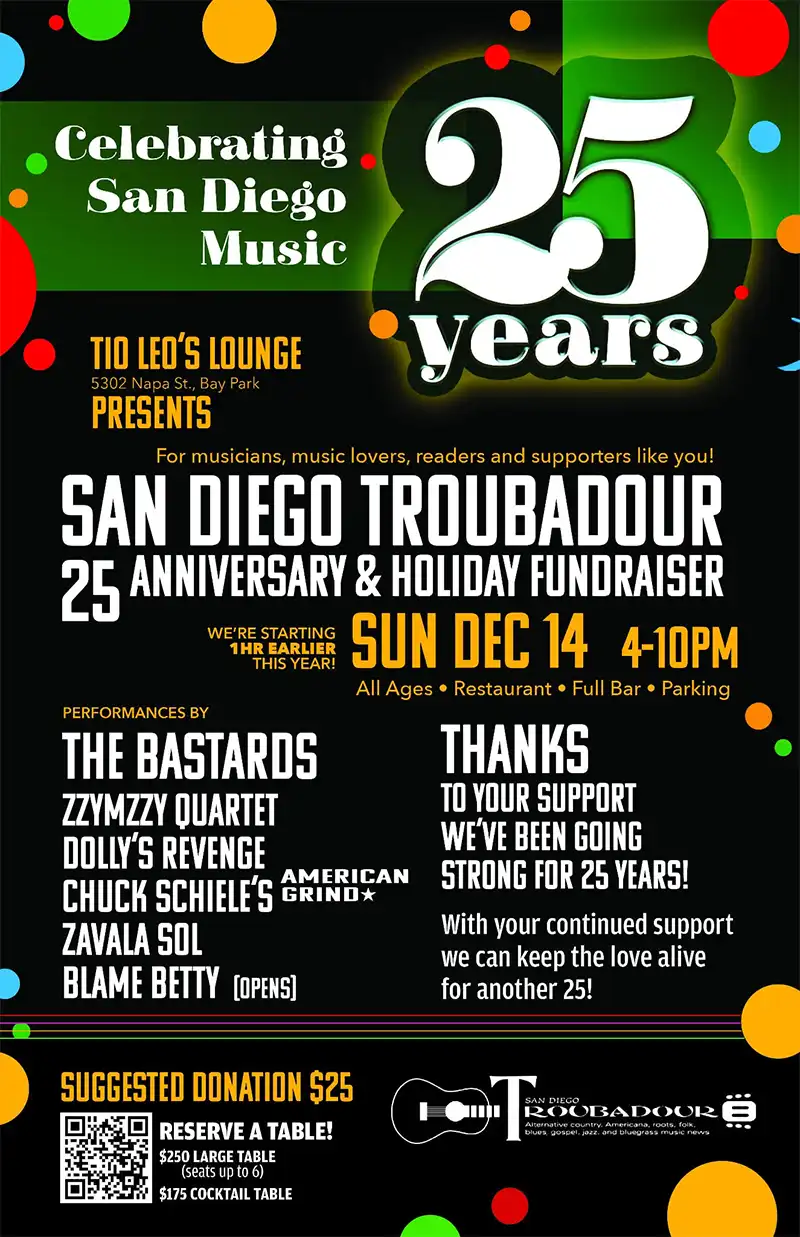Featured Stories
Brasil Jazz Festa at Dizzy’s!
Brazil is roughly the same size, geographically, as the continental United States, with a little more than half of our own population. And yet that Portuguese-speaking South American nation has even more musical styles than our own–which has given the world everything from jazz to country, gospel to blues, bluegrass to Cajun, and rock ‘n’ roll to Broadway.
While no American would ever speak of “American” music, instead referencing one of the above styles, we do often speak of “Brazilian” music–more out of a lack of familiarity than anything else.
Local jazz singer and promoter Allison Adams Tucker is offering an opportunity to become more familiar with Brazil’s vast range of musical styles. March 4 is the 10th edition of the Brasil Jazz Festa, held again this year at Dizzy’s.
“There are hundreds and hundreds of Brazilian rhythms, and they’re all regional,” Adams Tucker said by phone recently. “They’re very intricate, so Americans have a hard time understanding the intricacies of these rhythms.”
Say “Brazilian music” to the average American listener, and the description you’ll likely get is of the bossa nova, which Adams Tucker said makes sense.
“The bossa nova is very easy to understand. For a non-Brazilian musician, bossa nova is much more approachable, because it is a slowed down version of
the samba.”
The bossa nova made its biggest splash on these shores with the 1964 release and tremendous popularity (and staying power) of the Antônio Carlos Jobim standard, “The Girl From Ipanema” by jazz saxophonist Stan Getz and singer Astrud Gilberto – who was only in the studio supporting her husband, João Gilberto, who was playing guitar on the session.
In the years since, everyone from Sarah Vaughan to Ella Fitzgerald has recorded one or more albums of Brazilian-inflected jazz, and some Brazilian stars managed to gain a foothold here: Sérgio Mendes, Djavan, Milton Nascimento, Flora Purim.
Adams Tucker said many different styles of Brazilian music appeal to American listeners, if only they have the opportunity to hear them. “The festa is to share the immensity of the Brazilian rhythms and how they’ve influenced the language of jazz.
“In years past, we’ve sometimes had more on the Brailzian side and sometimes more on the jazz side. We’ve had samba dancers, cool percussion groups, the Brazilian martial arts dances, Brazilian food. And we’ve had just straight Brazilian jazz–Lori Bell and Peter Sprague. This year it will be more on the Brazilian jazz side, rather than the Brazilian.”
The featured artist this year is Brazilian guitarist Chico Pinheiro, along with Eva Scow, the Danny Green Trio, and Adams Tucker.
“Chico is quite a treasure, and while we have him here in San Diego he’s going to be offering a master class the next day. It’s going to be held in a Banker’s Hill community hall; the location is private until you make your reservation.”
Adams Tucker said the Jazz Festa was originally created after a group of San Diego musicians attended the California Brazil Camp in Cazadero in Sonoma County.
“One of the people on the faculty was Pinhero. Danny Green introduced me to some of his music, and when we came back from the camp Louisa West and I put [the first festa] together at the Encinitas Library – and it was a huge hit!”
A few years later, they moved it south to Dizzy’s. While flautist West has moved out of San Diego, Adams Tucker has kept the festa going. One of the rewarding aspects of the festival is that not only do American audiences gain a broader knowledge of and deeper appreciation for Brazilian styles, but Adams Tucker said many Brazilian expatriates get a taste of home.
“It often depends on who’s on the bill – but we get a good percentage of the Brazlian ex-pats,” she said of the festival’s annual audience. “We get a lot of jazz listeners, and a lot of people who are just curious and are open to any kind of music. We don’t really get a lot of world beat fans, oddly. People who are interested in dancing, it’s a pretty wide scope.”
And what she hopes listeners take away from the festa is how integrated music is becoming – that, for instance, American jazz holds appeal for Brazilian musicians and fans for many of the same reasons as it does for those of us raised with it: “The same elements that have appealed to artists around the world, making jazz not just an American art form but a global art form: The concept of improvisation, the freedom of creating.”
10th Annual Brasil Jazz Festa, Sunday, March 4, 6pm at Dizzy’s @ Arias Hall, Musicians Association, 1717 Morena Blvd. $25 ($20 advance purchase online). With Chico Pinheiro, Eva Scow, Danny Green Trio, and Allison Adams Tucker.







